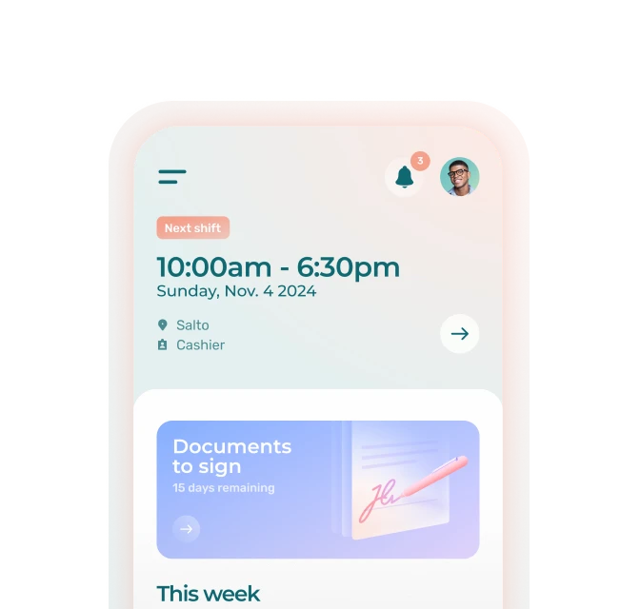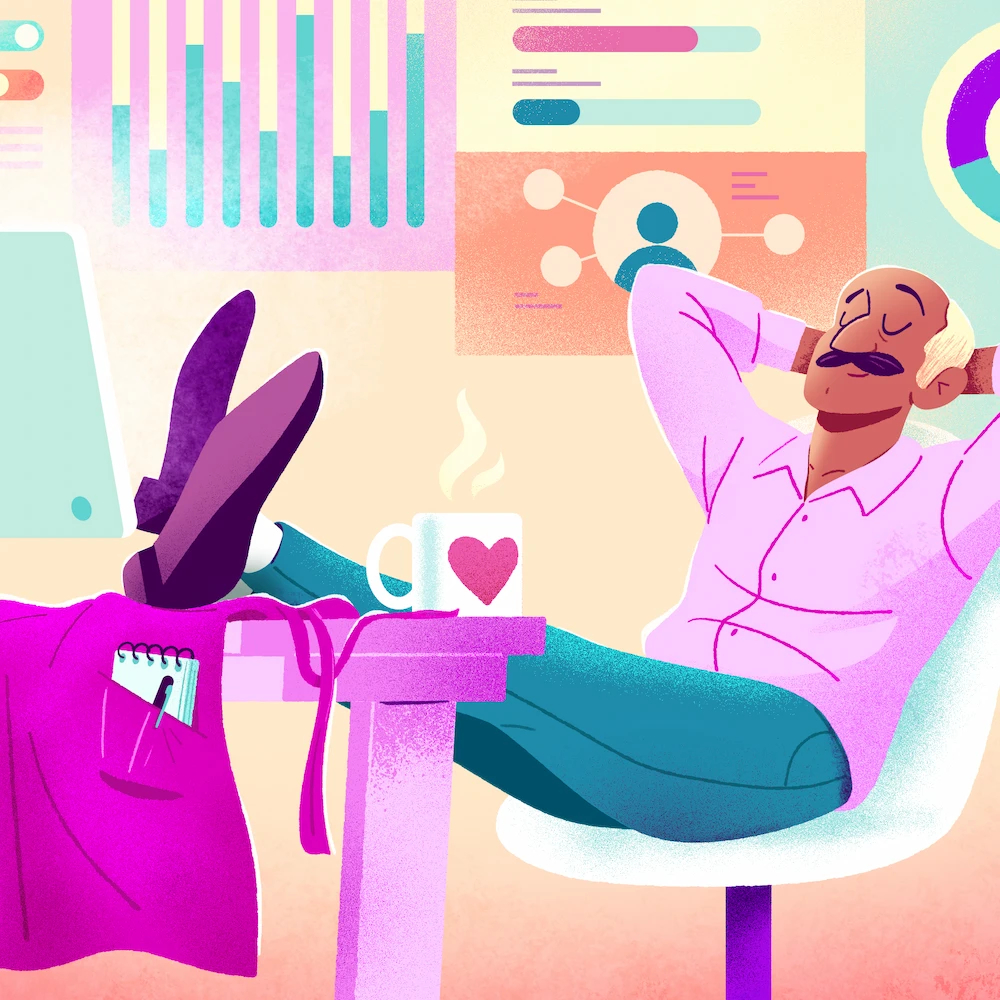It only takes one bad employee to throw an entire team off balance. Whether it’s disruptive behavior, lack of engagement, or a toxic attitude, managers must be ready to step in.
Sometimes, complex workplace situations stem more from poor team dynamics or unclear expectations than from truly bad employees. Still, managers must be able to recognize a bad employee when necessary—and know how to respond.
In this article, I’ll walk you through 10 common traits often seen in bad employees, along with practical strategies to address them.
You’ll also learn how to manage a difficult employee proactively, and how to tell the difference between a true attitude problem and a lack of support or direction.
10 Traits of a Bad Employee
Here are some problematic behaviours commonly seen in industries like retail, restaurant, healthcare, and others—environments where teams work directly on-site, manage fluctuating schedules, and depend heavily on collaboration to operate efficiently.
1. The Chronic Complainer
This type of bad employee always has something negative to say—about coworkers, managers, clients, or even the way their schedule is made. Nothing ever seems good enough.
How to handle it: Don’t dismiss their complaints. Instead, meet with them privately and encourage them to bring constructive suggestions when sharing feedback.
Create space for open communication, but set boundaries so their negativity doesn’t drain team morale.
2. The Procrastinator
Those bad employees frequently procrastinate, miss deadlines, and slow down the entire team.
In industries like food service, pharmacies, or assisted living, this kind of behaviour can delay service openings, throw off shift rotations, or force others to pick up the slack during a rush.
More importantly, it can harm the customer experience and damage your business’s reputation.
How to handle it: Break down tasks into clear, date-based steps with realistic deadlines. Hold regular check-ins and make sure the workload is clearly understood. Assess whether the root cause is a lack of skill or motivation.
3. The Workplace Troublemaker
Whether they’re spreading rumours or stirring up conflict, this bad employee disrupts team harmony.
How to handle it: Act quickly. Address the behaviour during a one-on-one meeting and clarify what’s expected. Reinforce your team values—respect and collaboration. If the behaviour continues, document each intervention.
4. The Chronically Late One
This bad employee frequently shows up late or misses shifts, harming the flow of work. Their absences can frustrate and demotivate coworkers, who often have to cover for them on short notice.
How to handle it: Keep track of lateness and no-shows. Sit down with the employee to explain how their behaviour affects the team. Check if there’s a personal issue behind it and offer support if appropriate. Set clear expectations—and outline the consequences if it continues.
5. The Change Resister
They question everything, slow down team momentum, and push back on anything new. In some cases, this resistance stems from anxiety, insecurity, or a need for stability in an environment they see as unpredictable.
How to handle it: Include them in the change process. Show them the benefits and invite them to contribute. Hear them out, but steer the conversation back to shared goals.
6. The Unreliable One
This bad employee can’t be counted on to follow through. They forget, delegate tasks at the last minute, or perform poorly. Over time, coworkers start asking not to be scheduled with them because it means extra work.
For example, in a restaurant, they might leave a teammate alone during a busy service without warning. In retail, they might skip end-of-shift tasks, leaving the next team to clean up the mess.
How to handle it: Be clear about responsibilities and use tools like task boards or reminders to keep things on track. Set firm consequences if expectations aren’t met.
7. The Disengaged Drifter
They show up, but that’s about it. They do what’s asked—nothing more. This type of bad employee is physically present but mentally checked out, which can drag down team morale.
In fast-paced environments like retail or food service, their lack of engagement disrupts task distribution and frustrates more dedicated coworkers.
How to handle it: Try to understand the root of the disengagement. Is it a lack of recognition? A poor role fit? Give positive feedback, set motivating goals, and look for opportunities to help them grow in their role.
8. The Lazy One
This bad employee avoids putting in effort, never takes initiative, and performs tasks mechanically. They do the job—but without energy or interest. That kind of behaviour quickly becomes a burden, especially in settings where every team member matters.
Coworkers often notice the lack of drive, especially in busy industries such as hospitality, senior care, retail, restaurant services, pharmacies, where teamwork is essential to provide quality service.
How to handle it: Dig into the “why.” Is it a motivation issue? Fatigue? Offer clear feedback and highlight wins, no matter how small. Set well-defined expectations and regularly assess performance.
9. The Underperformer
They constantly rely on others, lack autonomy, and slow down the team. Often, it’s not laziness—it’s a lack of training, confidence, or fear of making mistakes.
In senior residence, for example, this can delay meal service or resident care, putting pressure on coworkers who end up covering for them. Over time, that pressure can turn into burnout or resentment.
How to handle it: Establish clear guidelines about when they may request assistance. Give clear instructions and gradually work toward more independence. Acknowledge progress—even small steps.
10. The Bare-Minimum Mindset
This type of bad employee only does exactly what’s asked—and nothing more. They avoid helping teammates, shy away from shared responsibilities, and show little interest in contributing to the team dynamic.
In places like pharmacies or senior residences, this behaviour may manifest as refusing to restock a workstation or assist with urgent tasks, despite having the ability to do so.
How to handle it: Bring the conversation back to team values and the collective nature of the work. Explain how their behaviour affects morale and adds pressure on others. Set clear expectations around teamwork and highlight contributions that go above and beyond.
Bad Employee or Difficult Employee?
It’s crucial to distinguish between a difficult employee and a bad employee. A difficult employee might be going through a transition or facing personal or organizational challenges.
A bad employee, on the other hand, shows repeated harmful behaviours and resists attempts at coaching or correction.
To tell the difference, ask yourself:
- Is the behaviour new or persistent?
- Has the employee responded positively to past interventions?
- Does the work environment support their engagement?
- Have there been recent changes that might explain their reaction?
Managing a difficult employee requires clarity, active listening, and consistency. With targeted support and feedback, it’s often possible to turn things around.
Bad Employee or Poor Management?
Before pointing fingers at an employee, it’s important to put in place work conditions, communication, and expectations that support their success. Here are some key questions for managers to consider:
- Have I been clear in communicating my expectations?
- Am I providing sufficient guidance?
- Do I provide regular, constructive feedback?
- Is this behaviour isolated or widespread within the team?
- Am I open to reflecting on my own management style?
Often, a difficult employee becomes a high performer when given the right support.
But in some cases, despite all efforts, ending the employment relationship may be necessary to protect the workplace environment.
Check out this article to see if there’s something you could improve too: Are You a Bad Boss: 9 Typical Profiles and What to Do About It.
Your Role as a Manager
Managers need to act quickly, with respect and consistency. They must document incidents, clarify expectations, and ensure fairness. They play a key role in preventing harmful behaviours and fostering a positive team culture. Managing a difficult employee effectively requires courage and strategy—the results are well worth the effort.
How to Know When to Terminate a Difficult Employee
Even with the best intentions and most effective tools, some situations fail to improve. It then becomes necessary to ask the difficult question: is it time to consider termination?
Here are some signs that a constructive outcome may no longer be possible:
- Problematic behaviour persists despite multiple interventions.
- The employee consistently rejects feedback or refuses to reflect on their actions.
- The work environment deteriorates, and other employees are considering leaving.
- Team fairness is compromised, which harms overall motivation.
- You have exhausted all support options, including training, coaching, and restructuring the role or workload.
In these cases, deciding to terminate employment can be a necessary act of leadership. Of course, making this decision needs to be in compliance with laws, supported by thorough documentation, and ideally in collaboration with human resources.
To learn more about how to properly fire an employee, read the article How to Fire an Employee: The 10 Commandments.
Employee Corner: What if This Were You?
Do you recognize yourself in some of these behaviours? That doesn’t make you a bad employee. We all go through tough times, periods of low motivation or misunderstanding. What truly matters is your willingness to improve.
Here are a few tips:
- Ask your manager for feedback.
- Clarify the expectations tied to your role.
- Actively participate in team meetings.
- Make an effort to understand how your actions impact your colleagues.
Being a good teammate isn’t about being perfect — it’s about being willing to grow, collaborate, and contribute to the team’s well-being.
Intervene Better to Collaborate Better
Negative behaviours harm engagement, productivity, and team spirit. Fortunately, they can be identified, addressed, and often turned around—provided the manager is present, attentive, and strategic. Knowing how to manage a difficult employee is a crucial skill to maintain team cohesion and boost overall performance.
How to Manage a Difficult Employee Without Harming the Rest of the Team?
You can manage a difficult employee without harming the team by addressing issues quickly, privately, and respectfully—protecting the team’s atmosphere while helping the individual grow.
How to Tell if a Behaviour Is Occasional or Chronic?
Observe patterns and determine if previous interventions have been attempted. A one-time issue may be situational; repeated behaviour calls for action.
What Is the Difference Between Skill Gap and Poor Attitude?
A skill gap can be addressed through training, but if attitude issues persist despite interventions, disciplinary or administrative action may be necessary.












